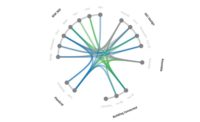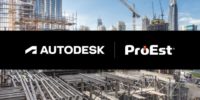DPR Construction has decided to make the Autodesk Construction Cloud its "single source of truth" for project management.
A cloud platform as a single source of project information from design to construction for all contractor personnel, trade contractors and project stakeholders has been a long-time goal of both contractors and construction technology companies, such as Autodesk, since early in the new millennium.
Standardizing on the project management platform is a part of DPR’s strategy to deal with the labor shortage that continues to plague construction, says Atul Khanzode, technology and innovation leader and a member of the management committee at the Redwood City, Calif.-based DPR, which ranked sixth in the ENR 2023 Top 400.
The contractor, which self-performs work, is known as a leader in both the application of construction technology and lean construction, and as a company that invests in and helps cultivate start-ups.
“We are focused on delivering predictable outcomes for our customers, not just during the construction phase but throughout a project's life cycle,” says Khanzode. An area of focus is “enabling prefabrication and set-up,” he adds.
DPR decided that Autodesk Construction Cloud could best enable its project delivery strategy, Khanzode says. Khanzode says Autodesk's 2018 acquisition of PlanGrid enabled DPR to take design information into the field and connect its workflows with the cloud platform.
DPR has been using Autodesk’s design tools for both shop drawings and construction coordination since Autodesk first acquired tools such as Revit and Navisworks. It's also been a user of the Autodesk Construction Cloud since it was introduced in 2019 and it has used component pieces, such as Assemble and, Build and Plangrid, as far back as 2011.
DPR has been concerned about predicted shortages of skilled labor for a while. “We’re going to have to find ways to do more with less,” says Khanzode.
Increased construction automation, which is a goal of Autodesk, may relieve some of the pressure associated with labor shortages. Enabling more digital workflows will align construction closer to manufacturing, says Jim Lynch, Autodesk’s senior vice president and general manager of construction solutions.
Industrialized construction or a manufacturing approach to construction helps to address labor shortages, Lynch says. “Working in a controlled environment” offers better quality control, is generally safer and is not subject to inclement weather and other distractions that “can cause the schedule to slip,” he adds.
The introduction of Autodesk Forma and its shared data layer will help contractors, such as DPR, make better decisions, during the design phase, about fabrication of building assemblies, Lynch maintains. Applying artificial intelligence early in the design process aids in material selection and achieving sustainable outcomes, Lynch adds.
One struggle is to try to apply a modular approach after the design is completed, says Khanzode. "We want to work with designers collaboratively to think about multitrade prefabrication, whether it's volumetric components or flat-packed ones," he adds.
Southland Industries, Cupertino Electric and other mechanical-electrical-plumbing contractors have already been prefabricating assemblies for DPR projects. Khanzode cites the UCSF Mission Bay Hospital project, where DPR updated plans using PlanGrid to simplify the job of project managers and superintendents.
For DPR, standardizing on one cloud platform is challenging, considering there are so many authoring tools that go into building a project. "In our strategy, we do think about a platform that could potentially integrate all the various [tools], so we could potentially have that single source of truth."






Post a comment to this article
Report Abusive Comment